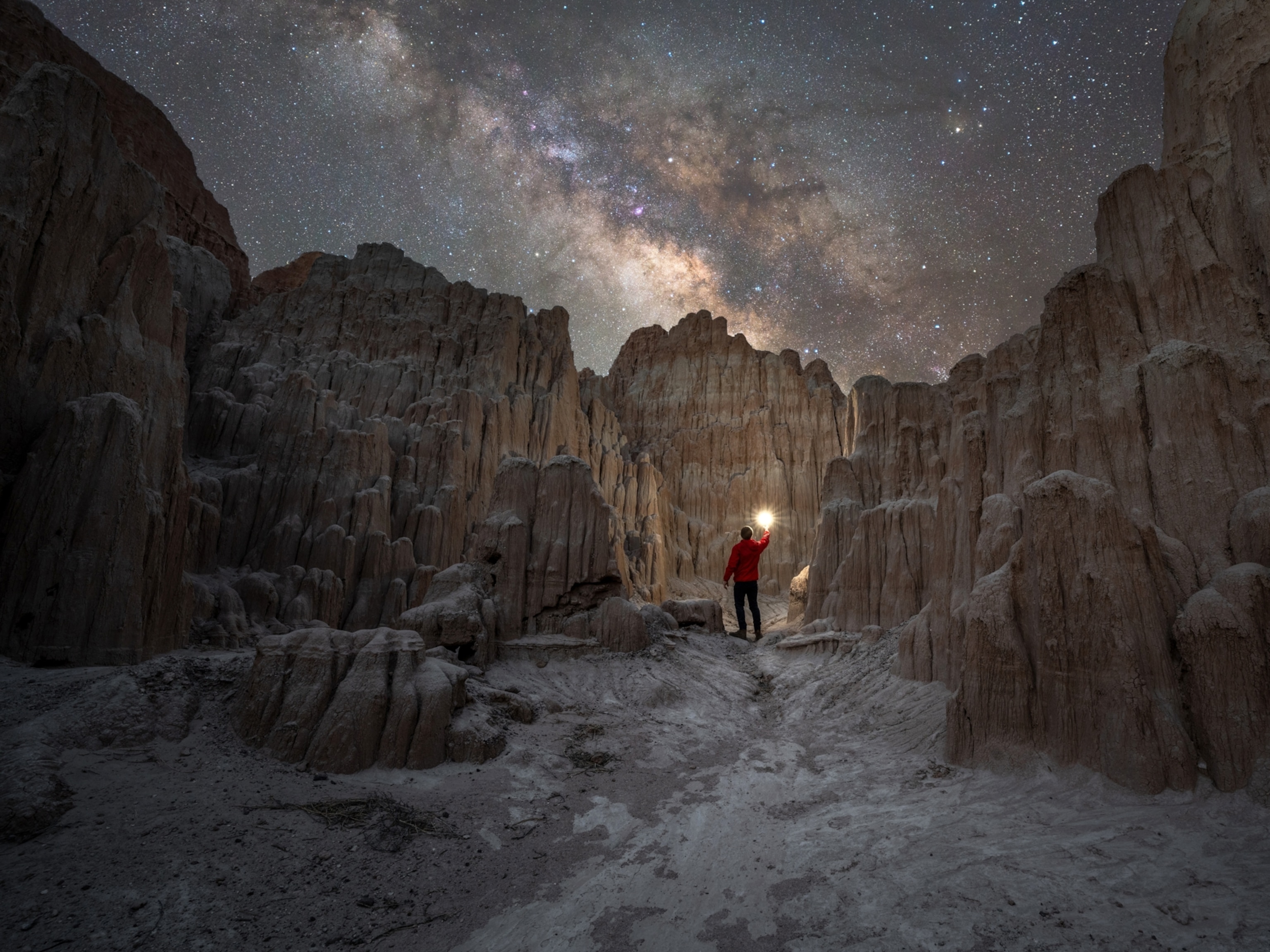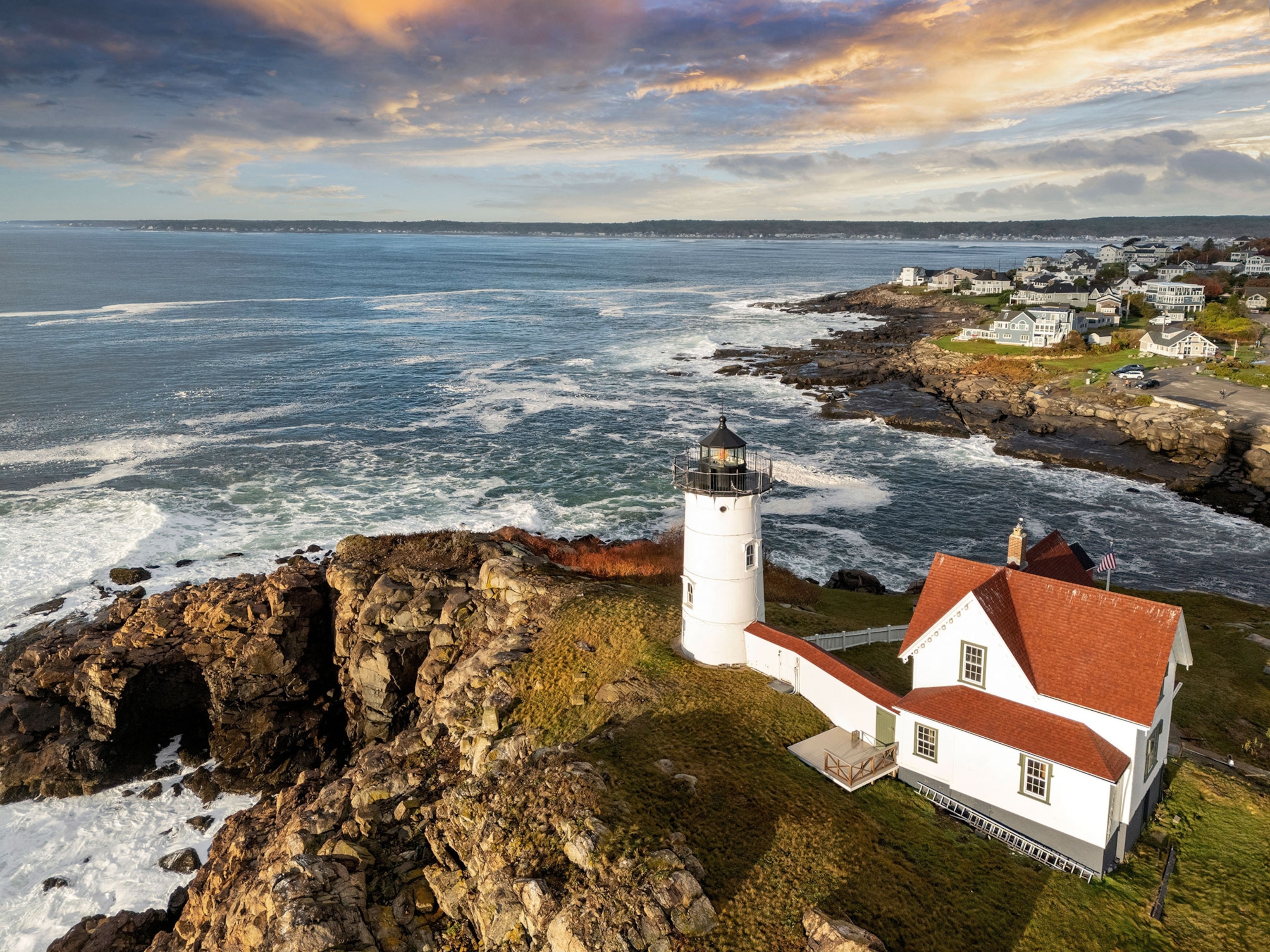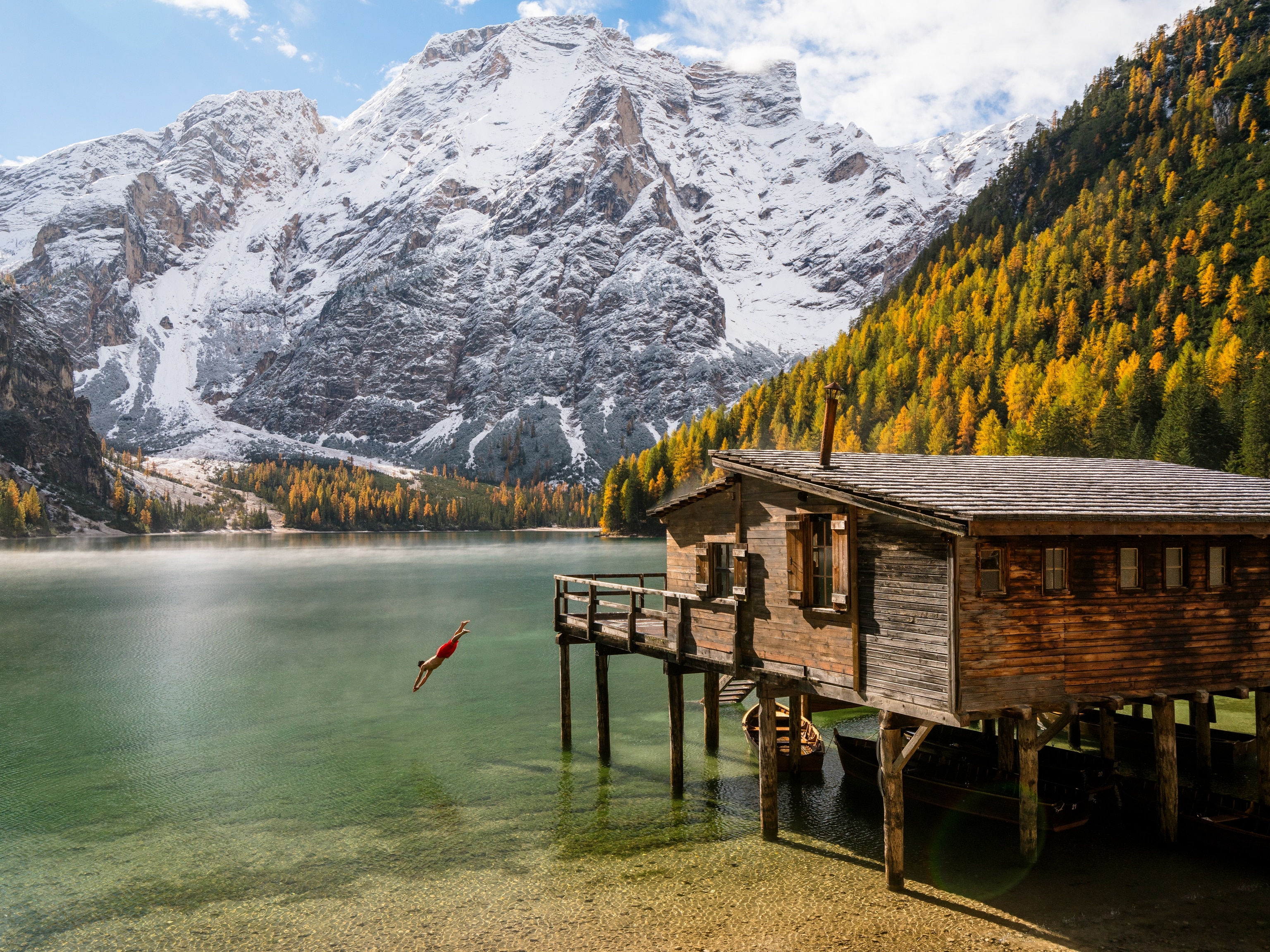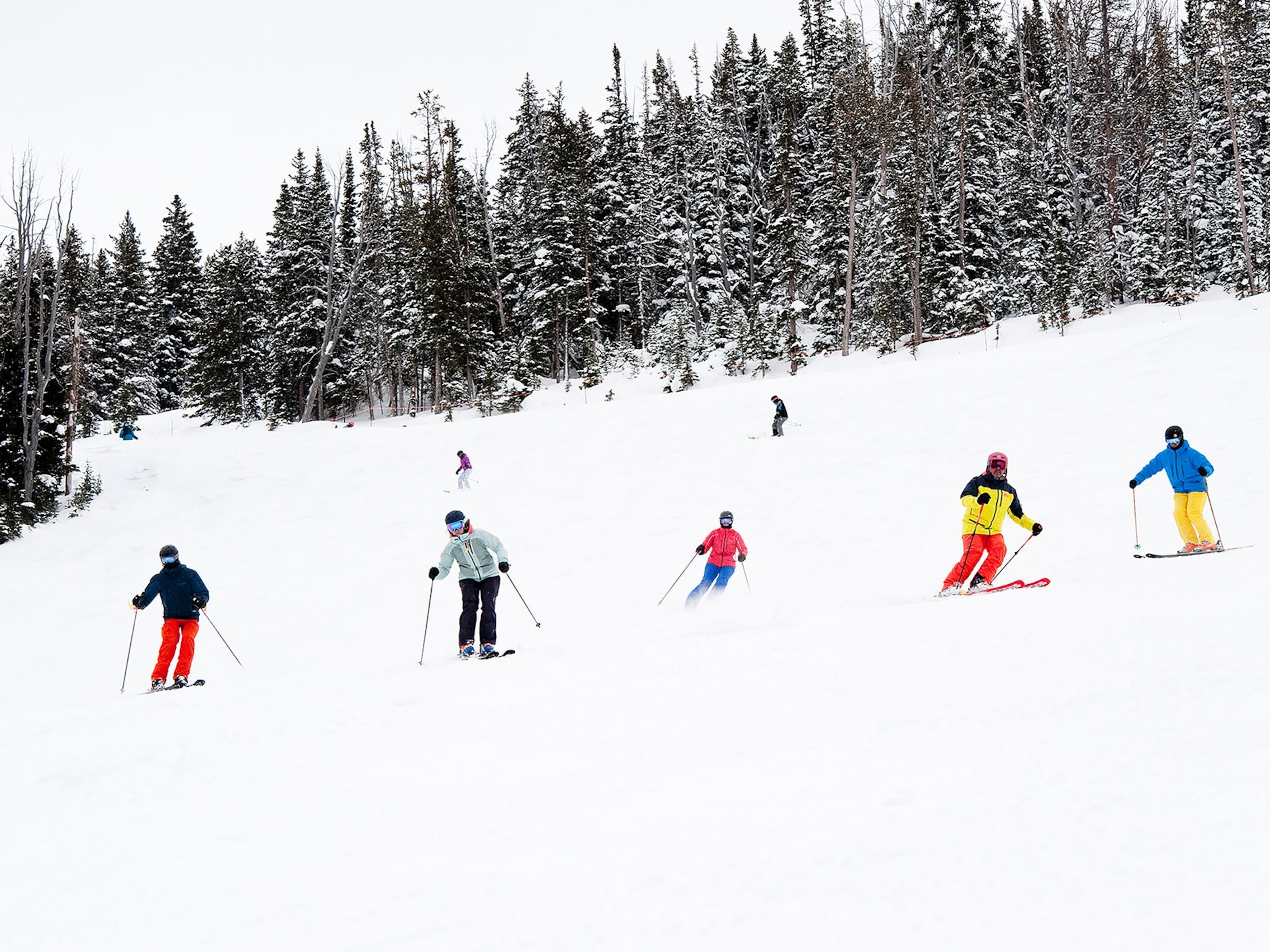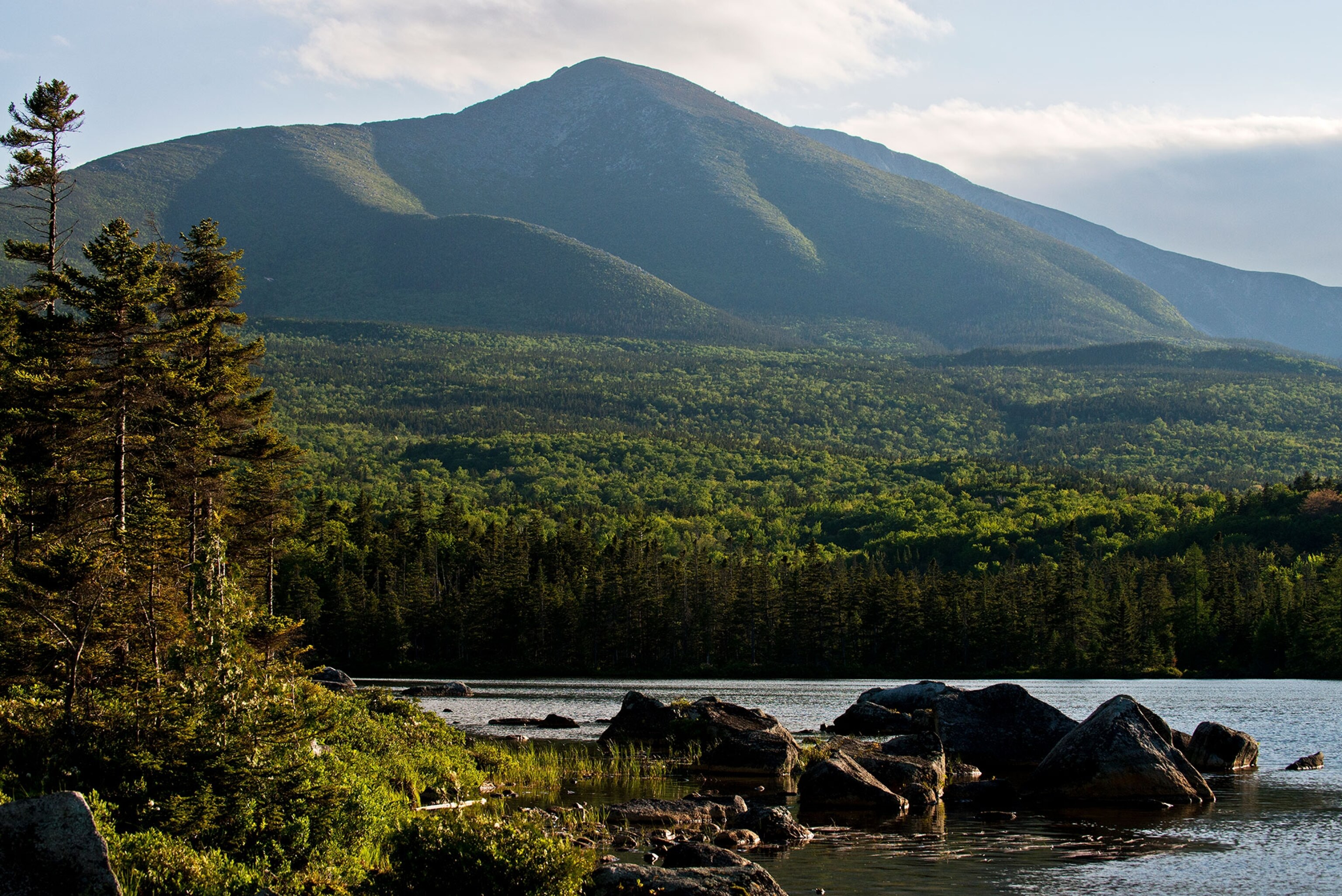
New National Monument Created in Maine's North Woods
The land for the monument was donated by a nonprofit connected to the family behind Burt's Bees.
More than 87,500 acres of forestland in Maine's North Woods was designated the newest U.S. national monument by President Barack Obama on Wednesday, just one day before the centennial of the National Park Service.
The new Katahdin Woods and Waters National Monument is the 413th preserved area in the Park Service and the second national monument to have been designated in the state (after Acadia National Park’s precursor). It sits east of Baxter State Park in north-central Maine, more than 200 miles north of Portland.
The land was donated to the federal government this week by Elliotsville Plantation, Inc., a nonprofit foundation started by Roxanne Quimby, the co-founder of the Burt’s Bees line of natural products. The foundation also says it is creating an endowment to help cover maintenance expenses in the monument.
Quimby and conservationist allies have pushed for a national park in the North Woods for years but have faced stiff opposition from some Maine residents and politicians (including the governor), as well as from the timber industry. Some people have argued a park could restrict access to hunting and snowmobiling—two popular activities there—but the White House says those activities will be allowed in some parts of the new monument.
Quimby had asked Obama to designate the land as a monument after she failed to get enough support in Congress to create a park. (Learn about other monuments designated by Obama, from Underground Railroad sites to scenery in the West, some of which have proven controversial with some locals.)
Presidents can designate monuments based on their authority granted in the 1906 Antiquities Act. Signed into law by President Theodore Roosevelt, it allows the commander in chief to protect cultural and scientific resources on federal land. Since then all presidents except Richard Nixon, Ronald Reagan, and George H. W. Bush have used the act to set aside sites such as the Statue of Liberty, the Grand Canyon, and the Grand Tetons.
The new national monument, which will be managed by the National Park Service, will protect "the stunning East Branch of the Penobscot River and a portion of the Maine Woods that is rich in biodiversity and known for its outstanding opportunities to hike, canoe, hunt, fish, snowmobile, snowshoe, and cross-country ski,” the White House said in a statement.
“In addition to protecting spectacular geology, significant biodiversity, and recreational opportunities, the new monument will help support climate resiliency in the region," the statement adds. "The protected area—together with the neighboring Baxter State Park to the west—will ensure that this large landscape remains intact, bolstering the forest’s resilience against the impacts of climate change.”
In praising the new monument, the National Parks Conservation Association says the designation is likely to create hundreds of jobs in the Katahdin region, "giving an economic boost to the entire state while permanently protecting a landscape that inspired American conservationists from poet Henry David Thoreau to President Theodore Roosevelt."
Opponents have countered that the jobs are likely to be limited to the tourist season. (Learn about threats to the Grand Canyon.)
The monument area also is home to lynx, bears, trout, and other important species, the NPCA adds.
“This land is truly deserving of national park status and protection," says Theresa Pierno, the president of the NPCA. "It has vast boreal forests, abundant wildlife, and flowing rivers that are all idyllic and so uniquely Maine.
Will Shafroth, president of the National Park Foundation (which helped faciliate Quimby's donation), said, “Through their vision and generosity, Ms. Quimby and her family are carrying on the philanthropic tradition from which the national parks were born 100 years ago."
The Obama administration has suggested that it is likely to designate additional monuments around the country before the president's term ends in January. (See 10 parks you didn't know you should visit.) It has now protected more land and water as national monuments than any previous administration.


